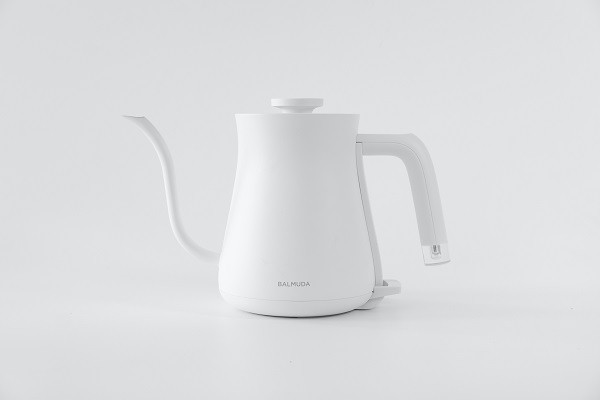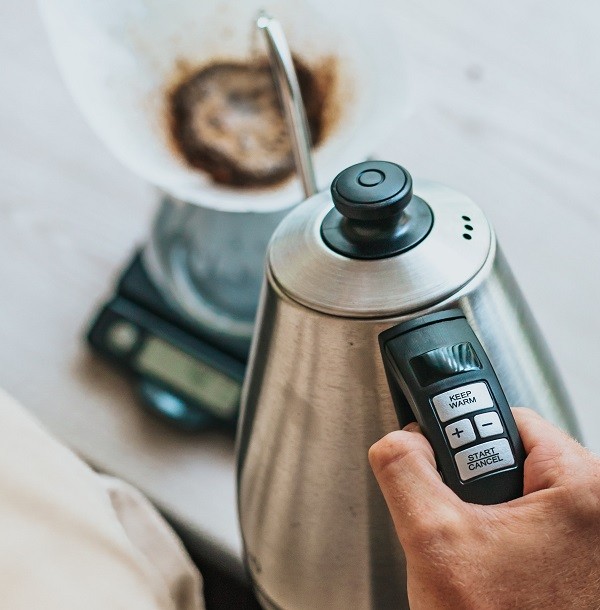How to Clean a Braun Coffee Maker
A Comprehensive Guide on How to Clean a Braun Coffee Maker
A Braun coffee maker is a fantastic addition to any coffee lover’s kitchen, known for its reliability and the ability to brew a delicious cup of coffee. However, to maintain the quality of your coffee and ensure your machine continues to function correctly, it’s essential to keep it clean. Regular cleaning prevents the buildup of coffee residue, mineral deposits, and bacterial growth that can affect both the taste of your coffee and the longevity of your Braun coffee maker. In this comprehensive guide, we will explore different methods to clean your Braun coffee maker, including using vinegar, cleaning the filter, addressing the drip area, utilizing the clean button, and maintaining a 12-cup coffee maker.
Why Cleaning Your Braun Coffee Maker Is Important
Before delving into the various cleaning methods, it’s crucial to understand why regular maintenance is essential for your Braun coffee maker:
- Taste and Quality: Over time, coffee residue, oils, and mineral deposits can accumulate in your coffee maker, leading to a bitter or off-flavored brew.
- Performance: A clean coffee maker brews coffee at the right temperature and speed, resulting in a better cup of coffee. Neglecting cleaning can lead to slower brewing times and potential clogs.
- Durability: Regular cleaning can extend the lifespan of your coffee maker. Mineral deposits can clog the internal components, reducing the efficiency of the machine and potentially leading to breakdowns.
- Hygiene: An unclean coffee maker can become a breeding ground for mold and bacteria. Regular cleaning helps maintain a hygienic environment for your coffee.
Now, let’s explore the various methods to clean your Braun coffee maker effectively.
How to Clean a Braun Coffee Maker with Vinegar
Cleaning your coffee maker with vinegar is an effective and natural way to remove mineral buildup and coffee oils. Here’s how to do it:
Materials You’ll Need:
- White vinegar
- Water
- A clean cloth or paper towels
Steps:
- Empty the Coffee Maker: Make sure there’s no coffee or filter in the machine. Empty any remaining coffee from the carafe and remove the coffee grounds.
- Prepare the Vinegar Solution: Mix equal parts white vinegar and water to create a cleaning solution. For a standard clean, aim for a 1:1 ratio. If you require a more thorough descaling, you can increase the vinegar concentration, but be sure to rinse the machine more thoroughly afterward.
- Run a Vinegar Brew Cycle:
- Fill the water reservoir with the vinegar and water solution.
- Place an empty coffee filter in the basket (or remove the basket if your coffee maker doesn’t have one).
- Turn on the coffee maker and let it brew half of the solution.
- Turn off the machine and let it sit for about 30 minutes to an hour. This allows the vinegar to work on the mineral deposits.
- After the waiting period, turn the coffee maker back on and allow it to complete the brewing cycle.
- Rinse with Water:
- Discard the used vinegar solution and thoroughly rinse the water reservoir.
- Run a couple of cycles with just water to ensure that all traces of vinegar are removed. This is important to avoid any vinegar taste in your coffee.
- Clean the Exterior: While the machine is running the water cycles, clean the exterior of your coffee maker with a damp cloth or paper towels. Pay attention to any coffee spills or stains.
- Clean the Carafe and Filter Basket: Don’t forget to clean the coffee carafe and filter basket. Wash them with warm, soapy water and rinse thoroughly.
- Enjoy Your Clean Coffee Maker: Once you’ve completed the rinsing cycles and everything is clean and free of vinegar, your Braun coffee maker is ready to brew fresh, great-tasting coffee.
Cleaning your coffee maker with vinegar should be done regularly, approximately every 1-2 months, depending on how often you use the machine and the hardness of your water.
How to Clean a Braun Coffee Maker Filter
The coffee filter is a crucial component of your coffee maker, and keeping it clean is essential for maintaining the quality of your coffee. Here’s how to clean it:
Materials You’ll Need:
- The coffee filter (permanent or disposable)
- Warm, soapy water
- A soft brush or sponge
- A clean cloth
Steps:
- Remove the Filter: If your coffee maker has a permanent filter, carefully remove it from the filter basket. If you use disposable paper filters, dispose of the old filter.
- Rinse and Soak (For Permanent Filters):
- Rinse the permanent filter under running water to remove any loose coffee grounds.
- Fill a container with warm, soapy water and let the filter soak for a few minutes.
- Scrub Gently (For Permanent Filters): Use a soft brush or sponge to gently scrub the filter. Pay attention to any stubborn coffee residue. Rinse it thoroughly with clean water.
- Dry Completely (For Permanent Filters): After rinsing, make sure the filter is completely dry before placing it back in the coffee maker. A wet filter can affect the brewing process and the taste of your coffee.
- Replace the Filter (For Permanent Filters): Once the filter is dry, reinsert it into the filter basket.
- Dispose of Disposable Filters: If you use disposable paper filters, simply replace the old filter with a new one.
- Clean the Filter Basket: Wipe the filter basket with a clean, damp cloth to remove any remaining coffee residue. Pay attention to the area where the filter sits.
Regularly cleaning your coffee filter, especially if you use a permanent one, ensures that your coffee is free from any bitter tastes caused by old coffee residue.
How to Clean the Drip Area of a Braun Coffee Maker
The drip area, where the coffee flows into the carafe, can accumulate coffee residue and stains over time. Here’s how to clean it:
Materials You’ll Need:
- Warm, soapy water
- A soft brush or sponge
- A clean cloth or paper towels
Steps:
- Unplug the Coffee Maker: Always start by unplugging the coffee maker for safety.
- Remove the Carafe and Filter Basket: Take out the coffee carafe and filter basket and set them aside.
- Clean the Drip Tray: If your coffee maker has a drip tray, remove it and clean it separately. Rinse it under running water to remove any coffee residue. Use a soft brush or sponge if needed.
- Clean the Drip Area: Use a soft brush or sponge to gently clean the area where the coffee drips into the carafe. Pay special attention to any stubborn coffee stains.
- Rinse Thoroughly: Rinse the cleaned parts under running water to remove any soapy residue.
- Dry Completely: Ensure that all components are completely dry before reassembling the coffee maker. You can use a clean cloth or paper towels to speed up the drying process.
- Reassemble the Coffee Maker: Put the cleaned drip tray, filter basket, and carafe back in place.
- Plug In and Use: Plug in the coffee maker and brew a fresh pot of coffee.
Cleaning the drip area should be done regularly to prevent coffee stains from becoming more challenging to remove over time.
How to Clean a Braun Coffee Maker with the Clean Button
Some Braun coffee makers come equipped with a “clean” button, making the cleaning process more convenient. Here’s how to use it:
Materials You’ll Need:
- Warm, soapy water
- A soft brush or sponge
- A clean cloth or paper towels
Steps:
- Unplug the Coffee Maker: Begin by unplugging the coffee maker for safety.
- Remove the Carafe and Filter Basket: Take out the coffee carafe and filter basket and set them aside.
- Activate the Clean Mode: Locate the “clean” button on your coffee maker. Press it to start the cleaning cycle. Follow the manufacturer’s instructions, as the exact process may vary from model to model.
- Prepare the Cleaning Solution: While the machine is in clean mode, prepare a mixture of warm, soapy water.
- Clean the Exterior: While the machine is running the clean cycle, take the time to clean the exterior of your coffee maker with a damp cloth or paper towels. Pay attention to any coffee spills or stains.
- Clean the Carafe and Filter Basket: Wash the coffee carafe and filter basket with warm, soapy water and rinse thoroughly. Ensure that all components are free of coffee residue.
- Clean the Drip Tray (If Applicable): If your coffee maker has a drip tray, clean it separately by rinsing it under running water. Use a soft brush or sponge if needed.
- Rinse and Dry: Once the cleaning cycle is complete, follow any prompts to rinse the machine with water. Rinse all components thoroughly and allow them to dry completely before reassembling the coffee maker.
- Reassemble the Coffee Maker: Put the cleaned drip tray, filter basket, and carafe back in place.
- Plug In and Use: Plug in the coffee maker and brew a fresh pot of coffee.
Using the clean button on your coffee maker is an efficient way to ensure your machine stays in optimal condition. However, not all models have this feature, so it’s essential to check your specific model’s manual.
How to Clean a Braun 12-Cup Coffee Maker
If you own a Braun 12-cup coffee maker, it’s essential to know how to maintain and clean this larger machine. Here’s how:
Materials You’ll Need:
- White vinegar
- Water
- A clean cloth or paper towels
Steps:
- Empty the Coffee Maker: Ensure there’s no coffee or filter in the machine. Empty any remaining coffee from the carafe and remove the coffee grounds.
- Prepare the Vinegar Solution: Mix equal parts white vinegar and water to create a cleaning solution. For a standard clean, aim for a 1:1 ratio. If you require a more thorough descaling, you can increase the vinegar concentration, but be sure to rinse the machine more thoroughly afterward.
- Run a Vinegar Brew Cycle:
- Fill the water reservoir with the vinegar and water solution.
- Place an empty coffee filter in the basket.
- Turn on the coffee maker and let it brew half of the solution.
- Turn off the machine and let it sit for about 30 minutes to an hour. This allows the vinegar to work on the mineral deposits.
- Rinse with Water:
- Discard the used vinegar solution and thoroughly rinse the water reservoir.
- Run a couple of cycles with just water to ensure that all traces of vinegar are removed. This is important to avoid any vinegar taste in your coffee.
- Clean the Exterior: While the machine is running the water cycles, clean the exterior of your coffee maker with a damp cloth or paper towels. Pay attention to any coffee spills or stains.
- Clean the Carafe and Filter Basket: Don’t forget to clean the coffee carafe and filter basket. Wash them with warm, soapy water and rinse thoroughly.
- Enjoy Your Clean Coffee Maker: Once you’ve completed the rinsing cycles and everything is clean and free of vinegar, your Braun 12-cup coffee maker is ready to brew fresh, great-tasting coffee.
Regular cleaning of your Braun 12-cup coffee maker is essential, especially for larger machines that tend to accumulate more residue and mineral deposits.
Additional Tips for Coffee Maker Maintenance
In addition to the specific cleaning methods mentioned above, here are some additional tips for maintaining your Braun coffee maker:
- Regular Descaling: Regardless of the cleaning method you choose, it’s essential to descale your coffee maker every 1-2 months. Over time, mineral deposits from the water can build up inside the machine, affecting its performance. Use a commercial descaling solution or a vinegar and water mixture for this purpose.
- Replace Water Filters: If your coffee maker has a water filter, replace it according to the manufacturer’s recommendations. This helps maintain the quality of your coffee and prevents mineral buildup.
- Clean the Heating Plate: The heating plate can accumulate coffee stains and residue. Turn off and unplug the coffee maker, then gently scrub the plate with warm, soapy water.
- Inspect the Power Cord: Regularly check the power cord for any signs of wear or damage. If you notice any issues, contact the manufacturer for a replacement cord to ensure safety.
- Read the Manual: Always refer to your coffee maker’s manual for specific cleaning and maintenance instructions. Different models may have unique features and requirements.
- Use Quality Water: The quality of water you use can significantly affect the longevity of your coffee maker. If you have hard water, consider using filtered or distilled water to reduce mineral buildup.
- Replace Old Coffee: If you notice that your coffee beans or grounds have gone stale or developed an off-putting odor, replace them. Fresh coffee produces a better-tasting brew.
Conclusion
A clean coffee maker is the key to consistently enjoying a great cup of coffee. Regular maintenance and cleaning not only improve the taste of your brew but also extend the life of your Braun coffee maker. Whether you choose to clean it with vinegar, use the clean button, or maintain a 12-cup coffee maker, following these guidelines will help you brew that perfect cup every time. Remember to check your coffee maker’s specific manual for any model-specific instructions, and make cleaning and maintenance a regular part of your coffee routine. With a clean machine, your mornings will start with the delightful aroma and taste of a freshly brewed cup of coffee.








